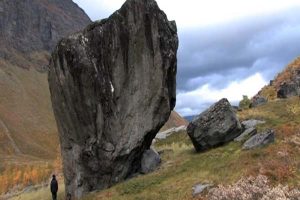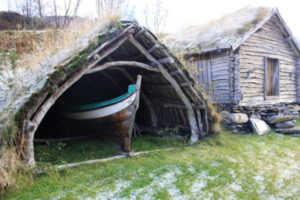Bonki - the last pagan in Lyngen
In the Lyngen fjord lies the tiny island of Bonkholmen, named after a Sami called Bonki who lived there in the 17th century and who was said to be the last pagan in Lyngen.
In the Lyngen fjord lies the tiny island of Bonkholmen, named after a Sami called Bonki who lived there in the 17th century and who was said to be the last pagan in Lyngen. According to legend, Bonki lay down to die in a crack in the rock where he had buried a bear, as illustrated by Povl Simonsen who found the grave.
But later archaeological finds show that the bones found were from three different bears, not from Bonki himself. These bones have been dated to 650-780 AD.
The bear had a special position in pre-Christian Sami culture. When bears were hunted and eaten, ritual required that the bones were gathered together and buried.
History of Bonki
As Povl Simonsen was told from a local worker man:
Bonki was a Sami hunter, and he lived alone on his island. This was a time when the church stood on a place called Karnes, and i front of the church there was a gauntlet. At that time it was compusory to go to church on Sunday. Bonki was a pagan, and of course he didn`t go to church. The vicar sent for him several times without success. Then the vicar sent the district sheriff, who took Bonki to the church at Karnes on Sunday and put him in the gauntlet. This was repeated three Sundays in a row. Then Bonki said “Now I have had enough of churchgoing in my time.” Bonki went home to his island, and people let him be in peace there. Sometime later Bonki felt that he would soon die. However there was noone in Lyngen area who either could or wanted to bury him according to his faith and rituals. Bonki then made his own grave, and when he felt that his time had come, he went to the grave, laid down and died.
Sources and links
The legend og Bonki, bivrost.com






